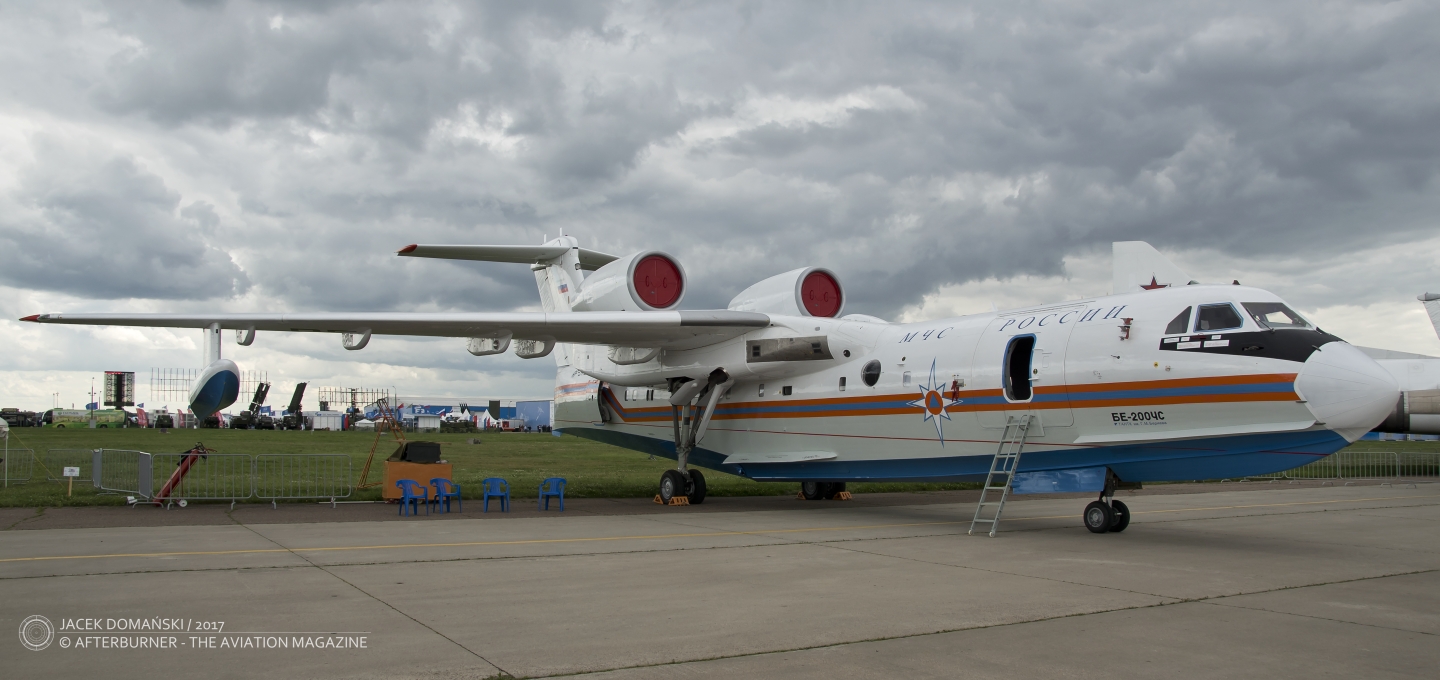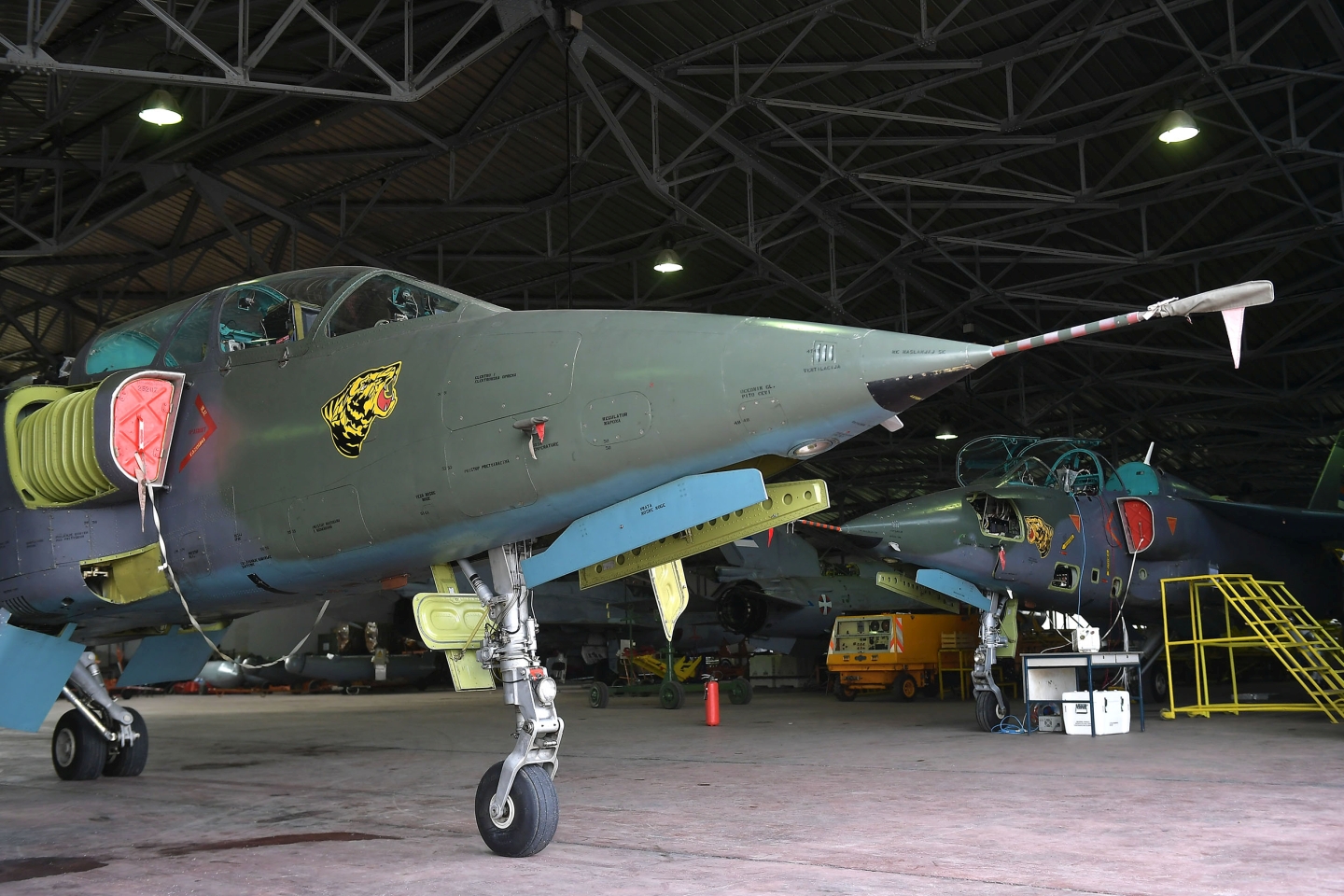
A few weeks ago, one almost unbelievable news was spread over the internet and surprised the aviation world – the Republic of Serbia is going to take J-22 Orao attack aircraft out from the aviation museum and make them not only airworthy again, but also operational in the air force. ´From the museum to the active service´, the headlines said, and the images of the displayed aircraft, transferred from the exhibition hall to the operational squadrons flashed before the eyes of many.
Undoubtedly, those headlines were too peculiar to believe… Fortunately, there is no reason to worry about any aviation museum exhibition as the real J-22 upgrade programme is a bit different. In addition, the information about the planned modifications of the existing fleet of Orao aircraft is not a novelty, as the first releases and the programme were already released in 2016.
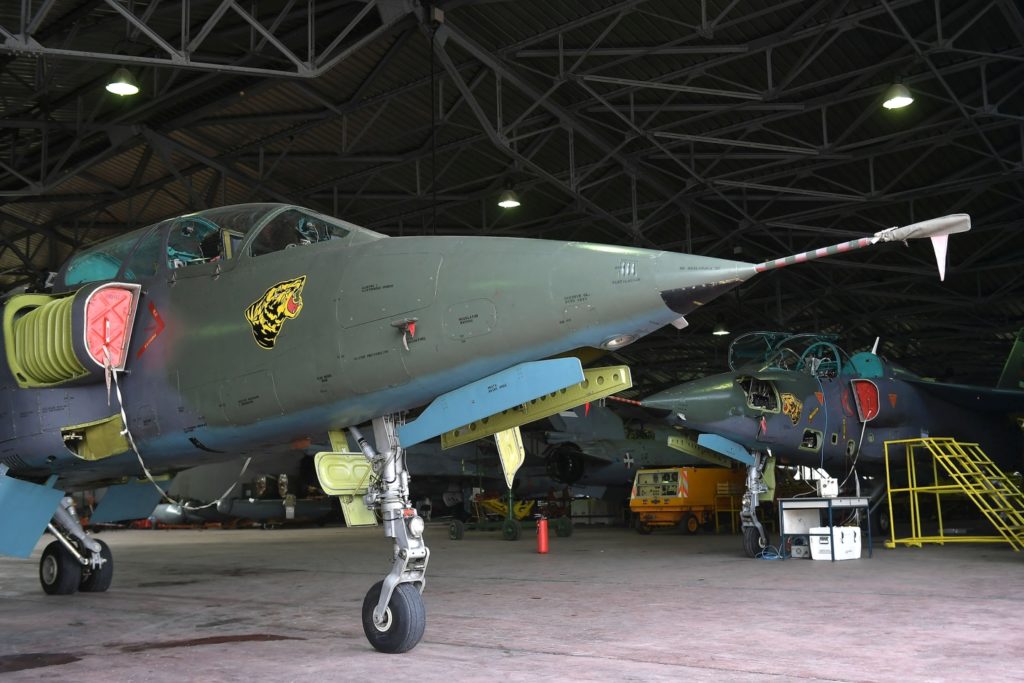
The J-22 Orao attack and training aircraft was a joint development of Yugoslavia and Romania, dated back to early 1970s. Both countries, even though being the socialist states, decided to be military independent from the Soviet Union and this project was one among the many to prove it. The initial idea was to create the aircraft similar in role and capabilities to SEPECAT Jaguar, however there was no possibility to obtain the permission for license-manufacturing of the modern British jet engine in the Eastern Europe.
Finally, the YuRom project adopted the old Rolls Royce Viper MK-639-47 engine, which wasn´t the perfect choice but was the only one available at the time. In addition, the new aircraft adopted a mix of Western and Eastern avionics and armament, and even if the final product never reached the level of SEPECAT Jaguar, it still was a technological leap for the aviation industry of both involved countries.
The new aircraft was named ´Eagle´ and performed its maiden flight in 1974 and then was serial manufactured from 1981 to 1992 in both countries – as J-22 Orao by SOKO factory in Yugoslavia (115 aircraft) and IAR-93 Vultur by Avioane Craiova in Romania (88 aircraft). The J-22/IAR-93 aeroplanes were manufactured in a few variants, with and without an afterburner, single- and two-seater, reconnaissance, ground-attack and training versions. All Romanian IAR-93 aircraft were retired in 2000s and the Serbian Air Force and Air Defence (Ратно ваздухопловство и противваздухопловна одбрана Војске Србије) remained the sole operator of Orao.
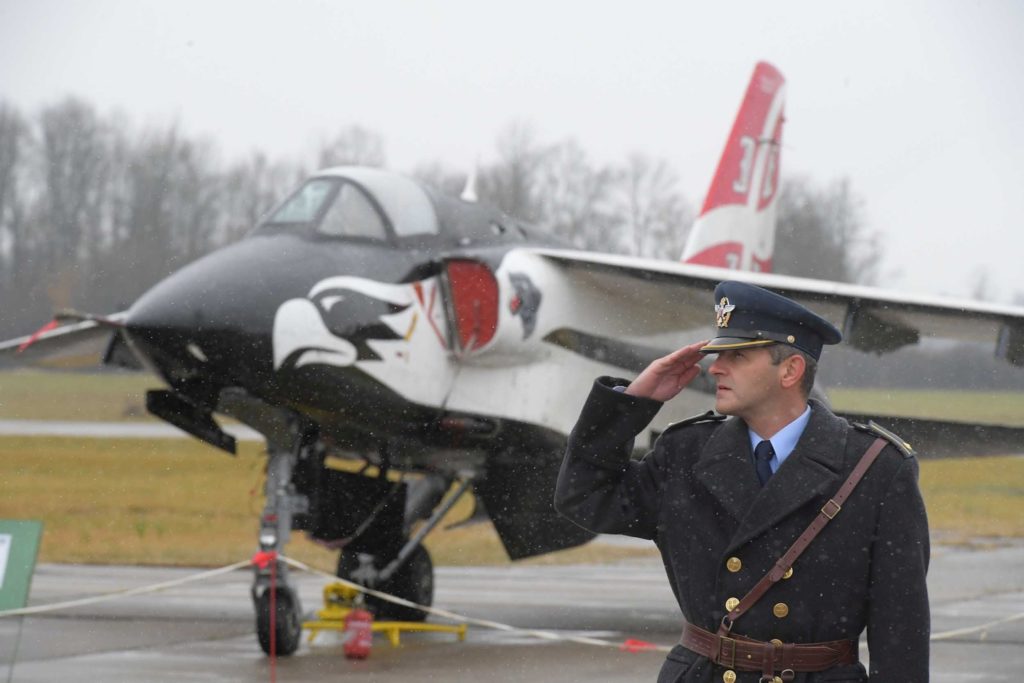
In April of 2016, on the occasion of official opening of the new hangar at Batajnica air base, the J-22 modernization programme was announced. This project unofficially adopted the name ´Eagle 2.0´ and the demonstrator aircraft made on two-seat NJ-22 Orao 25507 was officially presented. At that time, the Serbian media reported that only six Orao aircraft were airworthy and operational.
However, this initial step was the only significant sign of the modernization programme, as due to lack of funds and overall internal political situation, the project advanced very slowly. ´Eagle 2.0´ again became newsworthy in November of 2019, when NJ-22 Orao 25505 airframe was taken from the Aeronautical Museum Belgrade and sent to Aeronautical Institute ‘Moma Stanojlovic’ – and this was the situation behind the abovementioned headlines.
Although located in the museum, 25505 wasn´t a part of the aviation exhibition there. The Agreement on Sub-Regional Arms Control, signed in 1996 and covering all countries that came into being after the former Yugoslavia collapsed, reduced the number of military equipment in the region. At that time, 12 Oraos were withdrawn from the active service and stored in the aviation museum area, not accessible to the visitors.
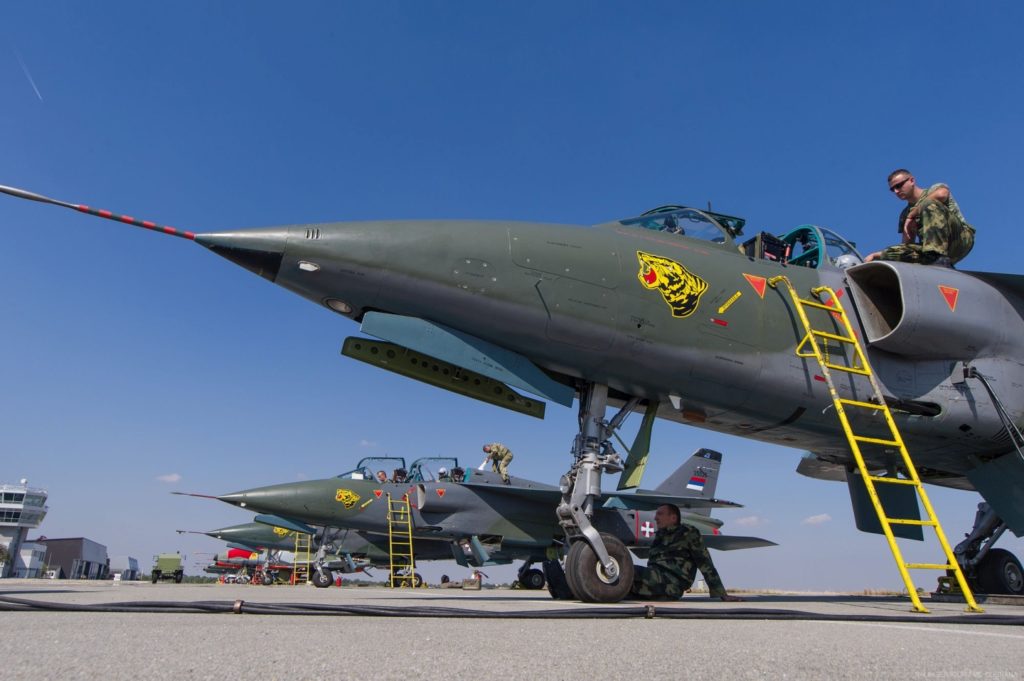
The information about transferring the NJ-22 airframe was published by Serbian aviation website Tango Six, and soon caused several negative reactions, including the commentary of local military analyst and publicist Aleksandar Radić for the N1 television channel. Radić named the idea of renovation of the airframes stored at Surčin as absurd and dangerous, resulting solely in wasting the resources.
This statement, made by the popular publicist, caused a strong and rapid response from the Serbian Ministry of Defence. In the explanation released by the Beta news agency and repeated by several traditional and online media in the country, Assistant Minister for Material Resources Nenad Miloradović confirmed that indeed, the J-22 and NJ-22 airframes stored in the museum area are considered as the possible platform for modernization and one of them is currently being examined at ‘Moma Stanojlovic´ plant.
The reason behind this decision was that those abandoned airframes have counted only 500 flying hours on the average, comparing to 3,000 hours of maximum expected life span for Orao. In addition, they are relatively new, as produced between 1987 and 1989, and have the better engines, with afterburners. The Assistant Minister emphasized that this doesn´t mean that this particular aircraft or any other stored at Surčin would automatically be a subject of modernization.
´Each and every airframe will be carefully examined to eliminate any risk related to making those Oraos airworthy again. The technical assessment will decide if they may be overhauled or not.´ Miloradović said and added, that there is nothing surprising in such procedure, as even the countries with a lot more resources are keeping the old aircraft operating, if only possible. Moreover, the modernization plan implemented by the MoD already tripled the number of operational Oraos. The programme is also increasing the capability and technological level of the domestic industry – an important factor not to be overlooked.
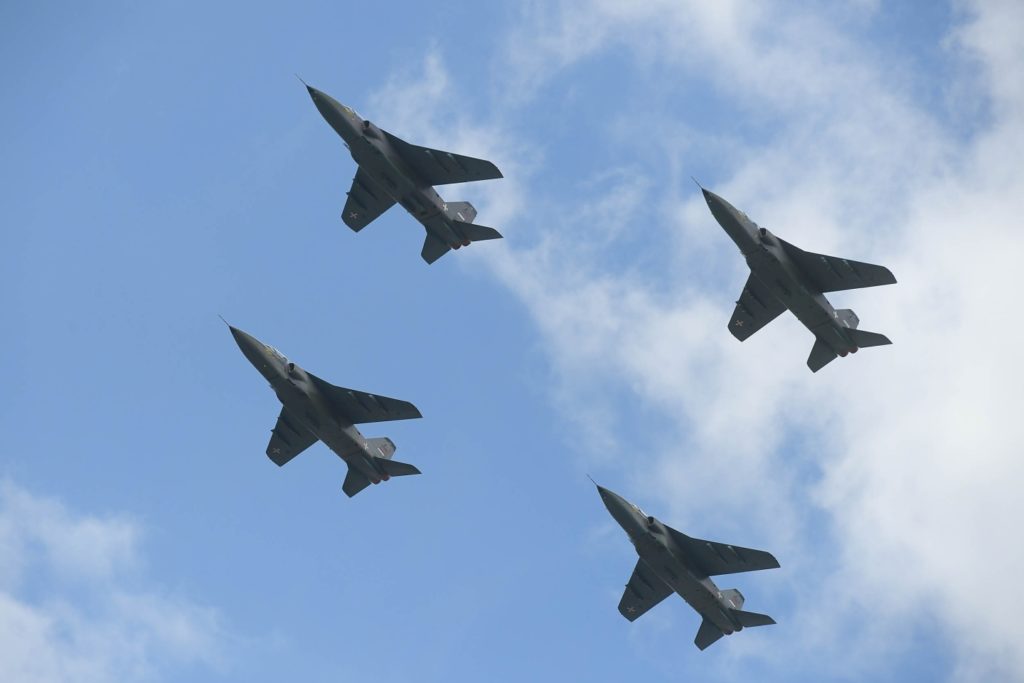
According to the statement of MoD, it is expected that after the general overhaul and modernization at ‘Moma Stanojlovic´, the maximum life span of J-22 and NJ-22 airframes would be extended to 40 years (some sources are claiming even 48 years).
The upgrade should extend the operational range of Orao and increase the aircraft survivability during combat operations by implementation of modern active and passive defence systems. Increase of the air- and ground-attack abilities would be achieved by introducing of modern missile systems and new integrated navigation and attack system. Most of the new weapons is expected to be manufactured by the local industry, however with the cooperation of a foreign partner. Finally, the modernized Orao 2.0 should be not only a two-seat trainer but a fully capable fighter-bomber (with a weapon system operator at the backseat), able to operate in all weather conditions during day and night.
On 9th December 2019, the Serbian Minister of Defence, Aleksandar Vulin, visited the Batajnica air base, when he met with Air Force and Air Defence Commander Major General Duško Žarković and other MoD and air force officials. In his statement for press, Vulin confirmed that the modernization programmes of ´Orao´ and ´Galeb G-4´ are ongoing according to the schedule and in the nearest future the Serbian Air Force would receive new, and fully operational, aircraft increasing its capability.
Is the way chosen by the Serbian MoD the right one and those aircraft, stored outside for long 23 years, would be able to fly again? The MoD officials stated that restoring the aircraft with close-to wreckage status is a common procedure and many much older aeroplanes, for example World War II veterans, were recovered from much worse conditions and are now airworthy.
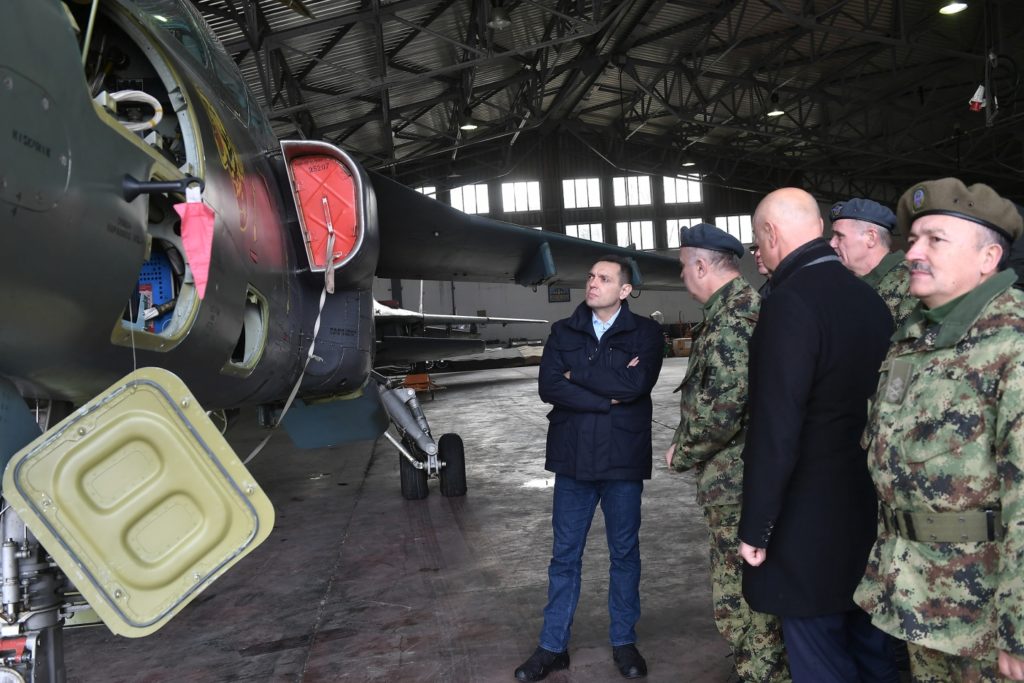
The sceptics underline that such restored aircraft are usually flying occasionally, at some air shows and for pleasure. They have several limitations, including the weather conditions or aerobatics manoeuvres but in the case of Orao, the goal is to have fully operational combat aircraft. Therefore, focusing on the old airframes is nothing more that a money-wasting dead end.
Nenad Miloradović stated that the only alternative to Orao 2.0 is to purchase a new training aircraft, with additional combat capabilities. A few possibilities were mentioned, including the Russian Yak-130, Chinese L-15, Italian M-346 or South Korean T-50.
However, purchasing a new aircraft means also implementation of a related complex system of maintenance and operational procedures, logistics, service, spare parts, equipment and training of the ground and flying crews. And it sounds like Serbia is currently not ready for such expensive purchase – especially that at some point between 2030 and 2035, MiG-29 jet fighter being the Serbian Air Force main combat aircraft, is expected to achieve the life span limits and would need replacement.
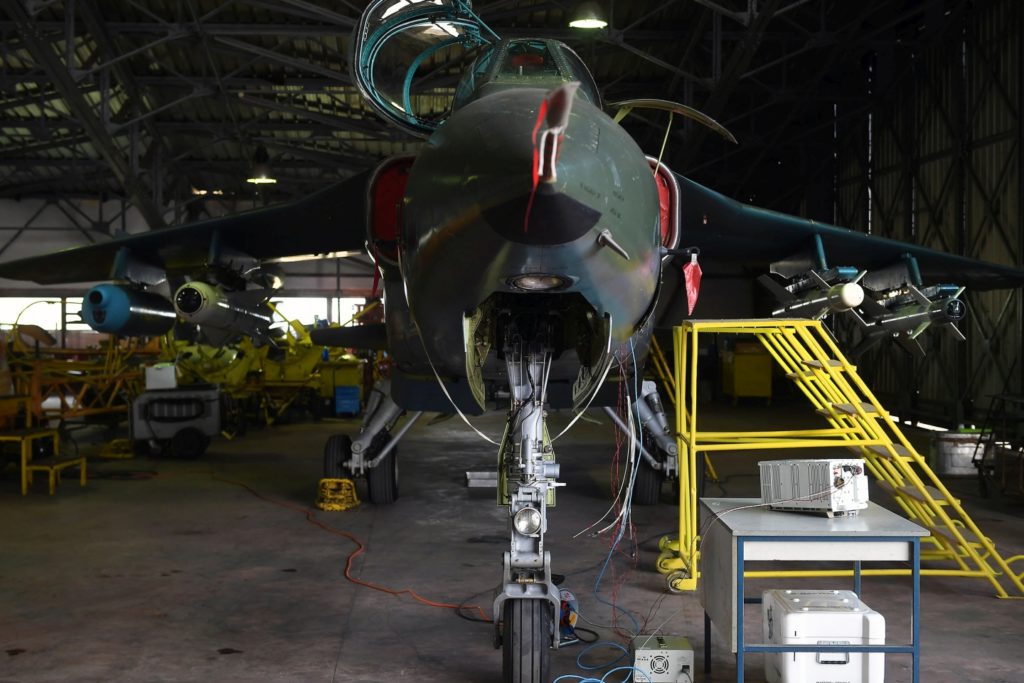
All quotations and photos © Министарство одбране Републике Србије / MoD Republic of Serbia. MoD press releases were used.

